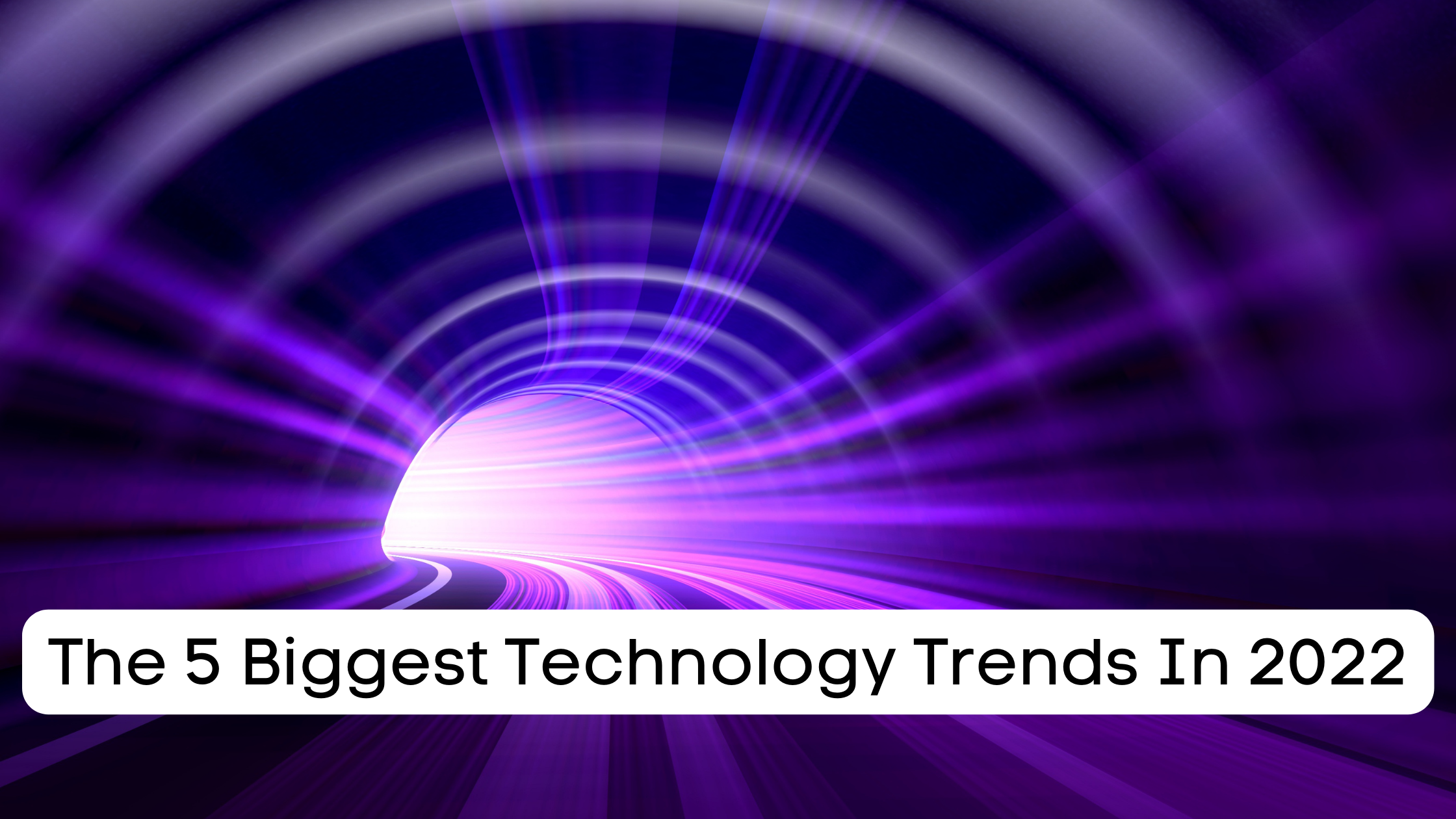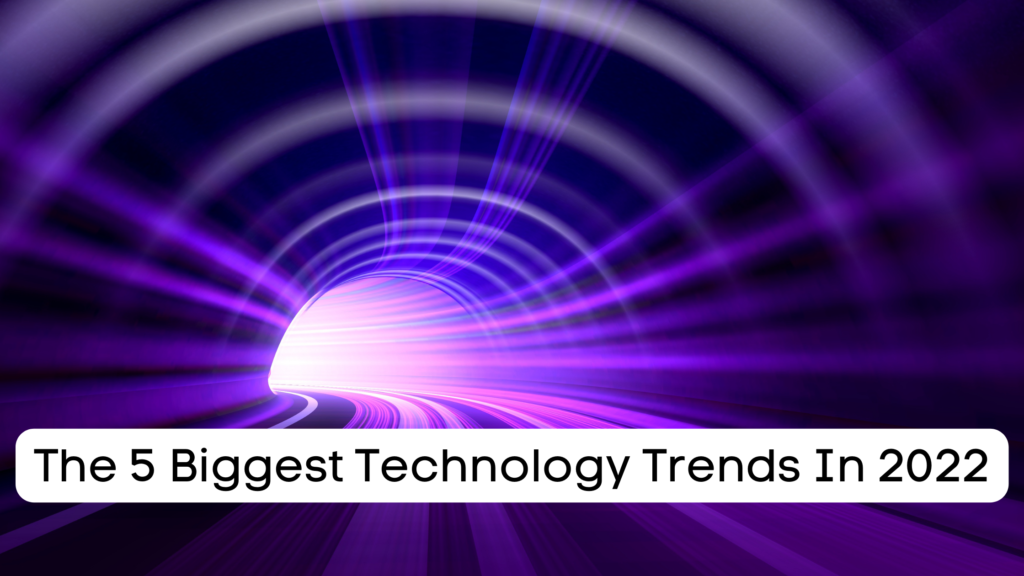
Our lives will continue to be affected by the CAVID-19 pandemic in 2022. As a result, digital transformation and the virtualization of society and business will continue to accelerate. The need for sustainability, the exponential growth of data volumes, and the increase in compute, and network speeds have the potential to regain their position as the most important drivers of digital transformation in the coming year. Know The 5 Biggest Technology Trends In 2022.

The most important lesson learned by many groups and individuals over the past two years has been that transformational change isn’t nearly as tricky as it once was thought if there is motivation. We have undoubtedly begun to cultivate a newfound receptivity to flexibility, agility, and innovative thinking as we shift our focus from merely surviving in a constantly changing world to thriving in it.
In light of my assumptions, I have outlined the trends I predict will have the most significant impact in 2022. There will be no discussions on quantum computing, neural interfaces, or nanotechnology – though they are on the agenda, their effects are not expected until further down the road. As tools emerge that allow us to combine these trends in new and unique ways, the most critical trends in 2022 will likely revolve around the convergence of technology trends.
The use of artificial intelligence is everywhere.
A “smart” device was previously just something that was connected – smartphones, smart TVs, and all the other devices connected to the internet were simply the same old toys. “Smart” today refers to technologies operating with artificial intelligence (AI) and generally using machine learning algorithms to help us in increasingly innovative ways. We can set our cars to monitor our attention and alert us if we grow tired by using facial recognition algorithms.
“Everything-as-a-service. A revolution in the way we work.
As data becomes more democratized and technology becomes more accessible, another powerful driver will emerge. In recent years, a whole industry has developed to enable as many people as possible to attain the skills and tools needed for technology-driven innovation, regardless of their expertise or experience. In the cloud, your data is stored, accessed, and processed at a fraction of the cost, and your risks of setting up expensive resources to test new ideas are significantly reduced.
It applies to digitization, virtualization, and notification.
As remote working arrangements gained popularity early in the coming decade, we saw the virtualization of our working environments and offices. It was just a crisis-driven surge of a much longer-term trend. In 2022, the concept of a “metaverse” – persistent digital worlds that exist in parallel with the physical world – will become more common.
There will be greater transparency, governance, and accountability.
Humans must trust technology; we (rightfully) object to many ways that it is currently being used, which we view as intrusive, dangerous, or irresponsible. Artificial intelligence is often portrayed as a “black box,” – meaning we can’t see into it to determine how it works. It may be due to its complexity rather than any deliberate attempt to limit our understanding, but the effect is different.
Sustainability: options for the future
With industries shutting down and people staying at home, renewable energy was the only form of energy that increased. Renewable energy usage increased by 40% during the lockdown in the US. On a global scale, all other energy sources declined, resulting in an overall reduction of 8% in emissions. As a result, renewable energy generation is expected to increase.

Leave a Reply